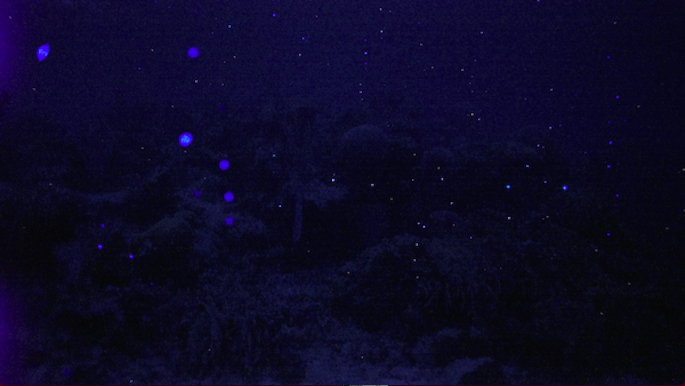Posted 10:33 a.m. Wednesday, Aug. 9, 2017

UWL research video featured in award-winning documentary on bioluminescence.
UWL research video featured in award-winning documentary on bioluminescence
UWL Associate Professor of Biology Gretchen Gerrish’s underwater research is reaching the general public through an award-winning documentary, which is streaming online through Curiosity Stream and airing throughout most of the world on BBC UK. Over the last seven years, Gerrish and her UWL student researchers have been studying shrimp-like crustaceans — called marine ostracods — that live in the shallow waters of the Caribbean Sea. These tiny creatures create amazing light displays in the dark water to attract mates. Gerrish and her student researchers film these displays as part of their research on ostracod identification and evolution. Last year they had the opportunity to travel and film with Ammonite Inc., a United Kingdom company that was working on a documentary on bioluminescence narrated by David Attenborough. [caption id="attachment_49474" align="alignleft" width="685"] Luminescent displays of three new ostracod species over coral reefs in Roatan, Honduras.[/caption]Their ostracod research and images were featured in the documentary “Light on Earth,” which began streaming on Curiosity Stream, a site custom built for streaming documentaries, in spring 2016. It was also featured in the BBC version “Life That Glows.” The film has received numerous awards internationally and just received two Emmy Award nominations, for cinematography and Outstanding Nature Documentary. View a list of the awards.
Gerrish’s research is supported by a National Science Foundation grant and is done in collaboration with four other universities: University of California-Santa Barbara, California State University Los Angeles, Cornell University and University of Kansas.
Luminescent displays of three new ostracod species over coral reefs in Roatan, Honduras.[/caption]Their ostracod research and images were featured in the documentary “Light on Earth,” which began streaming on Curiosity Stream, a site custom built for streaming documentaries, in spring 2016. It was also featured in the BBC version “Life That Glows.” The film has received numerous awards internationally and just received two Emmy Award nominations, for cinematography and Outstanding Nature Documentary. View a list of the awards.
Gerrish’s research is supported by a National Science Foundation grant and is done in collaboration with four other universities: University of California-Santa Barbara, California State University Los Angeles, Cornell University and University of Kansas.
